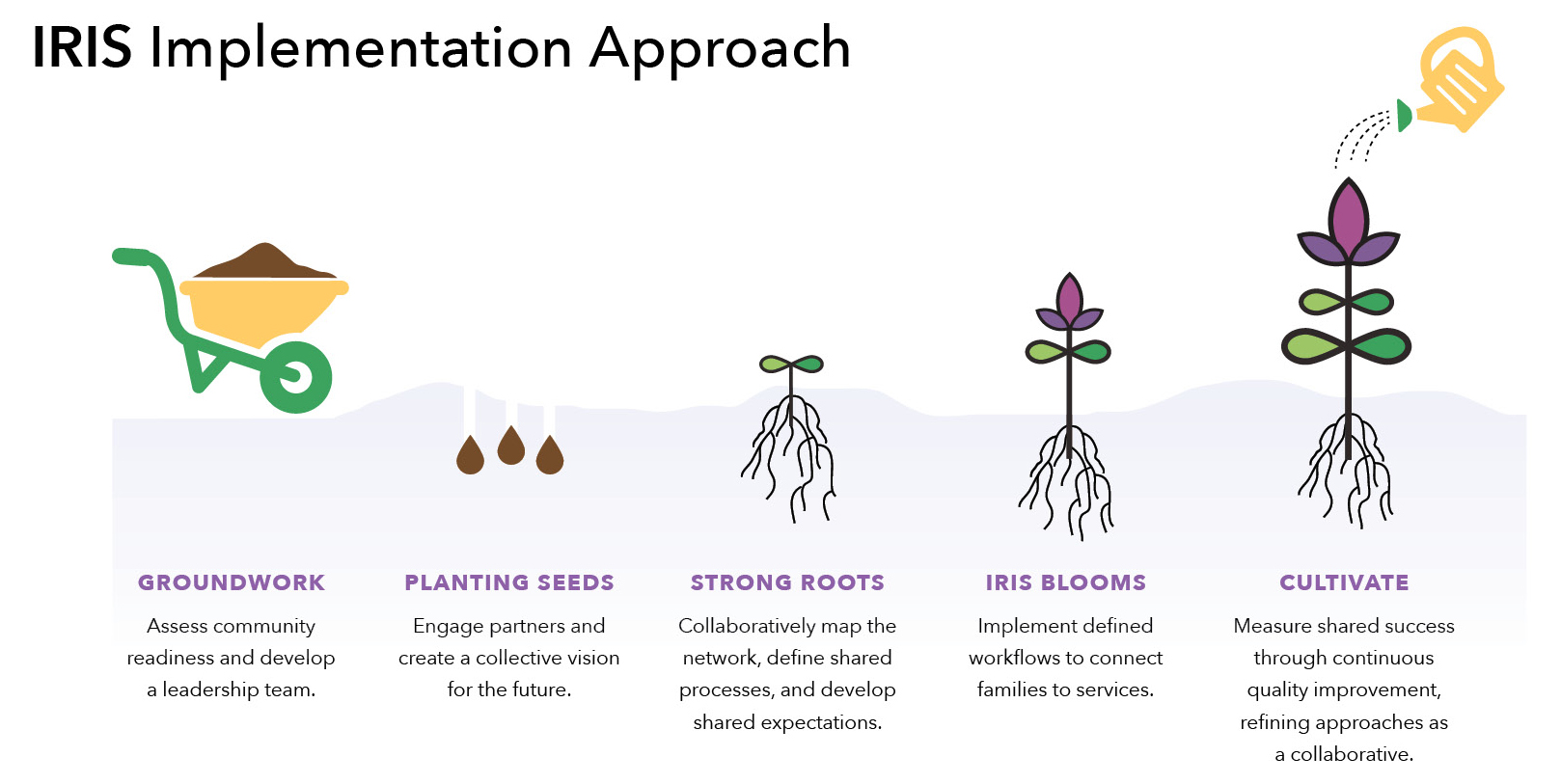A collaborative community process is the cornerstone of the IRIS implementation approach. Through pilots supported by the Kansas Maternal, Infant, and Early Childhood Home Visiting (MIECHV) program, the IRIS implementation approach was formed to support successful coordination and use of IRIS as a cross-sector referral tool. The strategies and milestones that make up the approach are grounded in implementation science principles, such as the Active Implementation Drivers and Stages of Implementation, to guide and accelerate the systems change effort in an adaptable approach (Active Implementation Research Network, n.d.; Fixsen et al., 2005; Ghate, 2016). Together, research and experience form the IRIS implementation approach.
The stages of implementation provide a path for the five phases of IRIS implementation. The alignment between the stages and phases is not direct. For example, prior to IRIS implementation, communities have begun the exploration stage, where IRIS has been identified as a solution, or a component of a solution, to address a need. The exploration stage continues across the first IRIS phase, Groundwork, when the local leadership forms to assess existing resources within a community, determine roles and responsibilities through the implementation process, and understand the tool. The length of time spent in groundwork, and every phase, varies by the readiness of a community as determined by the milestones they reach.
During the second phase, Planting Seeds, the local leadership team connects with community partners and stakeholders to introduce the tool and develop a shared vision for use. In alignment with the implementation driver installation stage, partners begin to see how their roles, organizations, and families they serve may benefit from IRIS. Together, the local leadership team and community partners approach phase three, Strong Roots, to establish shared processes and design the system. A strong effort is made by local leadership to support organizational and community workflows, ensuring that IRIS meets the unique needs of the community.
With the processes in place, phase four, IRIS Blooms, fine-tunes the workflows and system in preparation for the change in the community. Local leaders, partner organizations, and IRIS users complete the necessary training and process adjustments in preparation for launch. IRIS Blooms concludes upon launch, when initial implementation begins, meaning IRIS is available for partners and referrals may begin. The IRIS community is then ready for phase five, Cultivate. Through the first year, IRIS communities are closely monitored – refining practices and seeking growth opportunities. Initial implementation is apparent through this time; partners begin to learn and utilize the tool, with ongoing adjustments to their organizational-level process, as well as throughout the network. Local leaders spend time working to strengthen roots among partners and adjust the system as new or different needs become apparent. Expansion may occur, as opportunities to better support the needs of families in the community are recognized.
Communities may remain in cultivate for years as needs across the community change and partner interests grow. Implementation driver full implementation is not met until the IRIS community reaches benchmarks that indicate the community is well-established. Local leadership stability and consistent use of the tool takes time. While success may look different for each community, as defined through their vision and community need, IRIS communities that continue to develop effective practices and are resilient through leadership changes reflect a prosperous network.
Download: IRIS Framework




